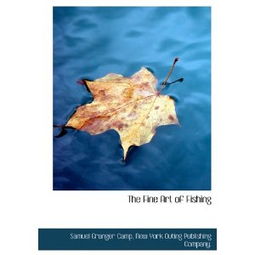Content:
In the realm of freshwater fishing, the rock plate fish, also known as the rock bass or boulder perch, is a sought-after species known for its striking appearance and good fighting qualities. These fish are often found in clear, rocky streams and reservoirs, making them a popular target for anglers looking for a challenge. To successfully catch rock plate fish, it's essential to master the right techniques and have a visual guide to help you navigate the waters. Here's a comprehensive guide to fishing for rock plate fish, complete with essential techniques and helpful images.
Understanding Rock Plate Fish Behavior
Before diving into the fishing techniques, it's crucial to understand the behavior of rock plate fish. These fish are often found in shallow, rocky areas where they can dart in and out of crevices for cover. They are most active during the early morning and late afternoon, but can be caught throughout the day. Rock plate fish are known to feed on a variety of prey, including insects, crayfish, and smaller fish.
Choosing the Right Equipment
To start your rock plate fishing adventure, you'll need the right equipment. A medium-action spinning rod with a length between 6 to 7 feet is ideal for rock plate fishing. This rod provides enough sensitivity to detect subtle bites and the power to set the hook effectively. Pair this with a quality spinning reel that can handle 6 to 8-pound monofilament line, which is strong enough to handle the fish's sharp teeth and provide enough line to play them effectively.
Bait and Lures
When it comes to bait and lures, there are several options that work well for rock plate fish. Live bait such as crayfish, nightcrawlers, and small fish can be effective, but artificial lures can also be productive. Here are some popular choices:
- Crayfish imitation lures: These lures mimic the movement and appearance of crayfish, which is a favorite food of rock plate fish.
- Grub worms: These soft plastic baits can be fished slowly or twitched to mimic struggling prey.
- Jigs: Small jigs with a grub worm or a piece of wax worm can be effective, especially in areas with plenty of cover.
Fishing Techniques
Nymphing: This technique involves casting your lure into the water and letting it sink to the bottom. Once it reaches the desired depth, you gently twitch the rod tip to mimic the movement of an injured prey. This method is particularly effective in rocky areas where the fish are looking for cover.

Trolling: Trolling is another effective method, especially in reservoirs. Attach your lure to a line and slowly move it along the water's surface or just below it. Adjust the speed to find the fish's feeding lane.
Jigging: For areas with a lot of structure, such as rocks and fallen trees, jigging can be a great technique. Drop your jig to the bottom, then pull it up in short, quick movements to trigger a strike.
Cast and Retrieve: This is a simple technique where you cast your lure out, let it sink, and then retrieve it back to the boat. The key is to keep the retrieve slow and steady, allowing the lure to swim naturally through the water column.
Visual Guides and Tips
To help you visualize the techniques and tips mentioned above, here are some helpful images:
- Image 1: A rock plate fish caught on a crayfish imitation lure, showing the striking colors and texture of the fish.
- Image 2: A close-up of a medium-action spinning rod, highlighting the rod's length and action.
- Image 3: A visual guide to nymphing, showing the rod tip movement and the natural swimming action of the lure.
- Image 4: A step-by-step illustration of the cast and retrieve technique, emphasizing the importance of a slow and steady retrieve.
- Image 5: A diagram of a reservoir with marked hotspots and fishing lanes, demonstrating the importance of understanding the fish's behavior and habitat.
Conclusion
Fishing for rock plate fish can be a rewarding and challenging experience. By understanding the fish's behavior, choosing the right equipment, and mastering the techniques, you'll be well on your way to catching these stunning creatures. Remember to always respect the environment and practice catch-and-release fishing where possible. With patience and practice, you'll soon become a master of rock plate fishing.












